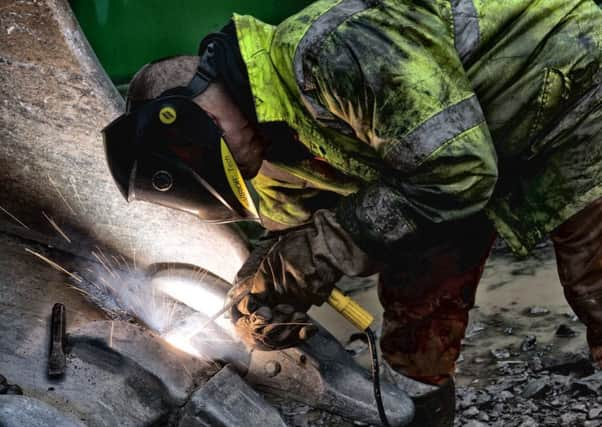100 Weeks of Scotland: Borders Railway


Week 66
I am in a van with Colin, a mechanic, somewhere between Gorebridge and Stow following the line of the currently under-construction Borders Railway, which mostly follows the old Waverley line from Edinburgh.
We have been talking about the logistics of this huge construction project and I have been questioning him ceaselessly, and probably very annoyingly, about how all the separate strands of how the project is coming together. Happily for Colin, he is soon able to escape me as we turn into one of the many access points on the 30 mile stretch of line, and he soon gets to work fixing a digger with a hydraulic fault.
Advertisement
Hide AdI first visited the line in February last year and the construction is carrying on at a great pace. I have been back several times since while working for one of the main contractors on the project. The huge effort of hundreds of men, women and machines will see the railway operational between Edinburgh and Tweedbank (near Galashiels) in late 2015.
Originally opened in 1849 between Edinburgh and Hawick, and extended to Carlisle in 1862, the line operated for 120 years until Dr Beeching’s report ensured its demise. The final passenger train ran on the 5th amid scenes of angry protest from those who had campaigned to keep the line open.
Today, the line again reverberates with the sounds of heavy machinery and human voices, as the work to reopen the line carries on apace. It is easy to forget where you are amidst the roar of the engines, as they move thousands of tons of earth and rock. I move a little down the line though and soon find myself on lonely stretches of the old railway where the only sounds are the wind and the occasional sheep from the fields all around. In the silence it is not hard to imagine the sounds of long ago, when the line was first built, by dynamite, by picks and by shovels.
When you see the huge machines of today, working incessantly for years to reopen the line, it gives you a small insight into the skill, guts, and graft of those early Victorian workers who built the line in the first place, more or less with their own hands.
What those ‘navigators’ would not recognise is the huge amount of time and effort put into ensuring safety standards are incredibly high. Every possible safety aspect is covered from the way cars should be parked in the car park to the correct clothing that must be worn. I have been stopped many times to check I have the correct footwear, eyeglasses and gloves on. It is an incredibly professional and welcome enterprise.
As I photograph, Colin shouts over to me that the machine is fixed. We climb back into the van and are soon on our way to the next access point and the next machine. As usual I am all questions. Colin nods occasionally, and drives on.
Advertisement
Hide Ad• Alan McCredie began the ‘100 weeks of Scotland’ website in October last year, and it will conclude in Autumn 2014. McCredie’s goal is to chronicle two years of Scottish life in the run-up to the independence referendum.
Alan says ‘one hundred weeks...’ is intended to show all sides of the country over the next two years. On the site, he says: “Whatever the result of the vote Scotland will be a different country afterward. These images will show a snapshot of the country in the run up to the referendum.
Advertisement
Hide Ad“The photos will be of all aspects of Scottish culture - politics, art, social issues, sport and anything else that catches the eye.”
Follow the project at 100weeksofscotland.com. You can also follow Alan on Twitter @alanmccredie.
• All pictures (c) Alan McCredie/100 weeks of Scotland